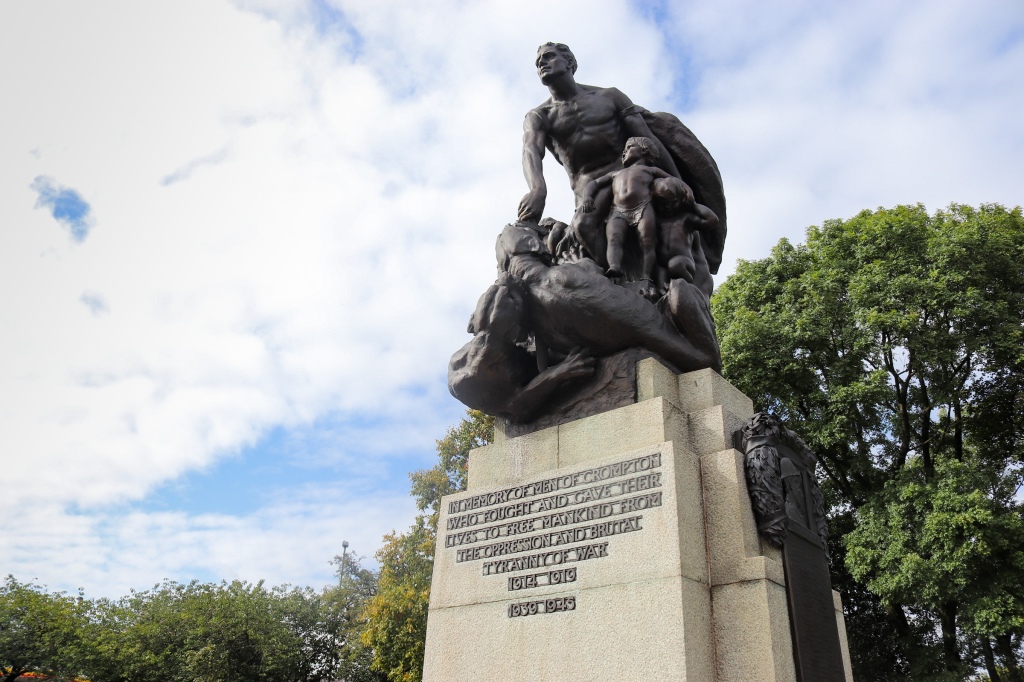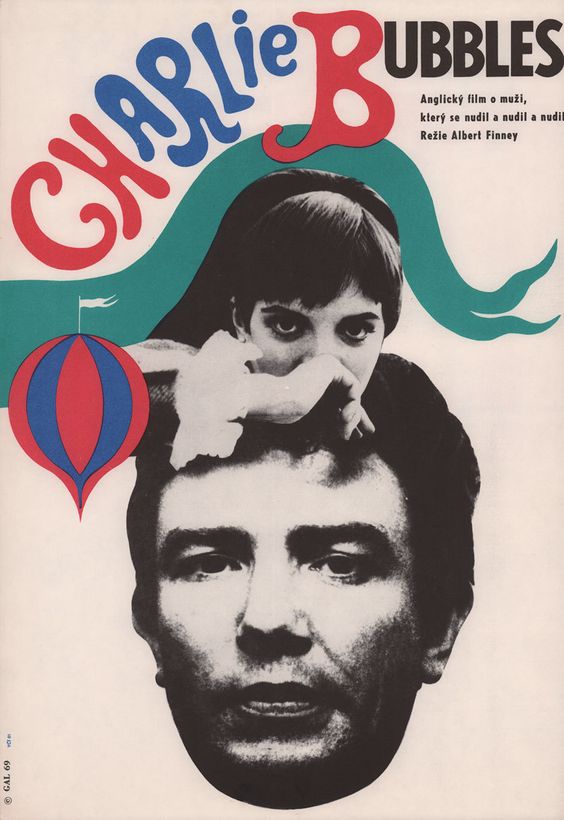
Day One
I am on the train from London Kings Cross to Edinburgh Waverley. York Minister is glistening in the early morning sunlight as the train powers up the spine of England, and I start this diary. To begin with I thought the cathedral was Durham. I was getting my cathedrals confused and my geography jumbled.
———
Looking from the train window, I come to the conclusion that there are now more wind farms in the English countryside than churches, which suggests that we are putting our faith into something different.
———
The spires of Darlington pass by – I never knew there were so many spires in Darlington – I count at least three and they are all still stained black with pollution, like the spires of cathedrals in Germany. Later Durham cathedral passes by looking like a huge stone man o’ war in full sail hovering over the town. I’m charting my journey by spotting spires and cathedrals.
———
At Newcastle children with inflatable pillows around their necks run for the train. As we move on the city glistens through the window and the Tyne is wide and gushing. Aside from the cities and the cathedrals and towns, there doesn’t seem to be any discernible change between the countryside of the south and the north of England. Everytime I look down from the train we seem to be passing over a canopy of trees with a river beneath it.
———
A woman reaches into a tree and cuts away at the branches, while her dog gads about behind her in the long grass of a fallow field. Suddenly, the stone of the houses seems darker. The green of the trees is greener. The clouds in the sky are darker. The grass in the fields is wilder and tinged with purple. Is the purple in the fields foxgloves or heather? Foxgloves for now and heather later. All this can only mean one thing – I’m in Scotland.
———
The sky is dark grey all of a sudden and the clouds strangely low for this time in the day, as we get our first glimpse of the sea. It always seems something to see the sea for the first time on a trip, even if in England it really is nothing, given it does not take too long for the sea to appear wherever you travel.
———
At Waverley station workers brandishing long poles are batting down multi-coloured balloons that have become lodged in the station roof. It’s raining and I walk to St Giles Cathedral, which I find to be small, splendid, homely and warm. It is an approachable building – such is the aim of the Scottish church in general – yet it is crammed with tourists. The tiny Thistle Chapel – the home of the Order of the Thistle – in particular is filled with tourists, phones held aloft – it’s not even that old in comparison with other things in the city. I wonder if any of them know what it is actually for?
———
In Saint Andrew’s Square sits a man high up on a column – strangely not Nelson or Wellington for once, but Henry Dundas – a man whom the Scots are no longer proud due to his attempts to sustain the slave trade, as a new plaque will soon make clear. Such is the obvious disdain on the soon to be plaque, that I’m surprised that the Scots have not taken matters into their own hands, tearing it down like the people of Bristol did to a statue of Edward Colston a few years ago. I suppose one of the benefits of having your statue placed on a column is that you are immune from the changing tastes of the people down below you. Barring some kind of daredevil act, removal is, I assume, all but impossible short of blowing the whole thing up, like the IRA did to Wellington’s Column in Dublin during the Troubles. All this goes to show – never trust a man on a column.
———
The Scottish National Portrait Gallery is a refreshingly low-key affair when compared with its newly refurbished sister in London. Political and military portraits are thankfully few – even Charles III is relegated to a back wall in another sign of Scotland’s growing desire for its independence. Instead portraits of Scotland’s civilian citizenry dominate. Artists, some of whom I was not aware, play a key part, with self portraits such as one by Modernist artist William McCance standing out.

Day Two
The rain sheets down and I’ve got sunglasses in my pocket – the story of my life in a two second vinaigrette. The train from Edinburgh to Glasgow is a fast one, it seems to barely touch the rails as the misty countryside flies by in a green and purply haze. A woman with a scar on her arm walks up the aisle, while opposite me a young man sits with big white headphones and a ripe banana on the table in front of him, as the train pulls in at Lenzie, before departing for Bishopsbriggs. The mist is very low – it’s in the trees. I’m going to Wemyss Bay – where I will need to find a boat to sail to Bute.
———
The Clyde can seemingly have seven types of weather at once. In the distance, over the hills, black storm clouds, over us – dingy grey, light wind and drizzle and behind us the odd sunburst over the mainland. Rothesay – the largest town on Bute – appears typically constructed of grey stone as we sail closer, but behind the town there are the peaks of three tree covered hills, which, when caught in a sunburst could almost be in some South American jungle, such is their luscious green and dark dense-looking nature. As I step onto the shore, I realise that the sail and the sea air has cleared the headache that has been troubling me all day.
———
Rothesay is like an old faded Victorian seaside town and it is filled with junk shops. In one shop a man walks in and asks if anyone is good at identifying fish. He gets no answer. So naturally, he walks over to me brandishing his phone, and asks if I know fish, which I most certainly do not. He ignores this and shows me a picture on his phone on an auction website of what appears to be a large taxidermined cod or trout or something attached to a varnished wooden board. So I tell him it’s a cod, or a salmon and the man scoffs that it certainly is not a salmon. So, he asks an elderly woman standing next to me the same question and she also identifies it as a salmon, but she adds the caveat that ‘she does not know fish,’ which he seems to respect more that when I told him the same thing. With this he loses all hope and leaves. As I walk away, I see him in the street again, and he shouts over to me, “well I’m buying it no matter what it is,” before running off into the distance.
———
This is one of those towns where a bus arrives once every hour if you’re lucky – miss it and your plans are severely dented. Somebody asked me if I was lost – sadly I wasn’t. I felt guilty that I did not need the help that was so readily offered.
———
I don’t often travel alone, but the ease at which I’m keeping this diary suggest that I am missing real conversation. In fact, I need to stop writing and look up, otherwise I might miss the bus and then there goes the next hour. I’m waiting for the 1450 to Mount Stewart, I’m writing it down, not just for the record, but so that I don’t forget.
Mount Stewart is such an extra ordinary confection of a stately home – neo-gothic in style, but infused with a dose of astrology. It is extraordinary that the Marquis of Bute has an exact replica of the make up of the astrological night sky on the day he was born painted on his ceiling. During the First World War the house was requisitioned and turned into a hospital and the Marquis’ bedroom became an operating theatre, meaning the injured soldiers could stare up into the night sky while in surgery, and check if they were due any luck before they disappeared into a haze.
In the dining room the guide -a young girl – literally dared me to ask her a question so I mumbled something about how old the dishes were on the lavishly set dining table. I can’t remember how old she said they were, but I do remember her saying that they put all the chipped ones at the back of the table so people can’t see them. She said that she thought that was nice, because the chips showed that the dishes had been used and were not just for show. I suppose the same goes for people – the more chipped the better.
———

Day Three
The central gardens of Edinburgh are quite relaxing and run through the very centre of the city like a green vein. The sun has come out finally and I see a man spread out on the grass with a tiny bottle of champagne meant for one in front of him and a crystal glass all set out on a metal the tray. Glamour is not dead in his head at least.
———
This is one of the longer rail journeys I’ve done in my life (it ends up being six hours with delays back to London) and typically I have lost my headphones. So I space reading Wuthering Heights with staring out of the window. The long railway track to London is lined with people saying goodbye and hello – little individual station-side scenes of happiness and sadness that are perceived from the train like photographs hanging from a country-length washing line.
———
So, what conclusions can I draw, as the beautiful sails of Durham Cathedral appear once more on the horizon, as I make my way back to London and the sun starts to set
I set out wanting to examine the virtues (or lack of ) of traveling alone. Today, traveling alone has lost some of its stigma. It used to be seen by some as the preserve of strange people and the chronically shy. In days gone by some people would rather not travel than travel alone. Today though, traveling alone is seen as a big gleaming badge of honour. It is seen as a way to prove ones independence or to temper any over-reliance one may have on a partner who may – for a multitude of reasons – not always be there. Travelling alone is viewed as a way of ‘getting a little me time’, of finding your inner self, or of smashing comfort zones.
Travelling alone boosts confidence certainly, but it is not always an easy journey, especially if you don’t like your own company.
There is a view – and it is a view I partly subscribe to – that things are only fun if you do them with another person. Experiences are meant to be shared so you can talk about them and remember them together, albeit sometimes from different perspectives. Holding joint memories – be they happy or sad – affords both people a lifelong connection through reminiscence, when it comes.
I do think that it is important to have ‘me time’ and I do think that it is wise to be on at least speaking terms with your inner self and to – crucially – be comfortable with solitude, because no matter how much of a people person you are, you never know when you might suddenly find yourself alone. Loneliness finds its way to everyone in the end, so it is best to be prepared so it does not catch you unawares and in a way that you might find difficult to deal with.
I think over the last few days this diary has for me become a vector for my lack of a companion on this trip – that and finding myself talking up a storm to myself – as everyone who spends some time alone finds themselves doing. I’m sure that the random observations that I would have ordinarily bored the person next to me with I have instead scribbled down on these pages, and because I can be something of a talker, I have found myself with a full notebook.
So I have replaced sturdy shared memories, which can be almost as absolute as celluloid when confirmed with another person, with written words. Is that just as good? Probably not. A few days travelling alone can be good for the soul, I have no doubt, but ultimately we all need somebody to talk to. And if you don’t talk very much at all then just a little bit will do, and you can save the rest to write down.






























